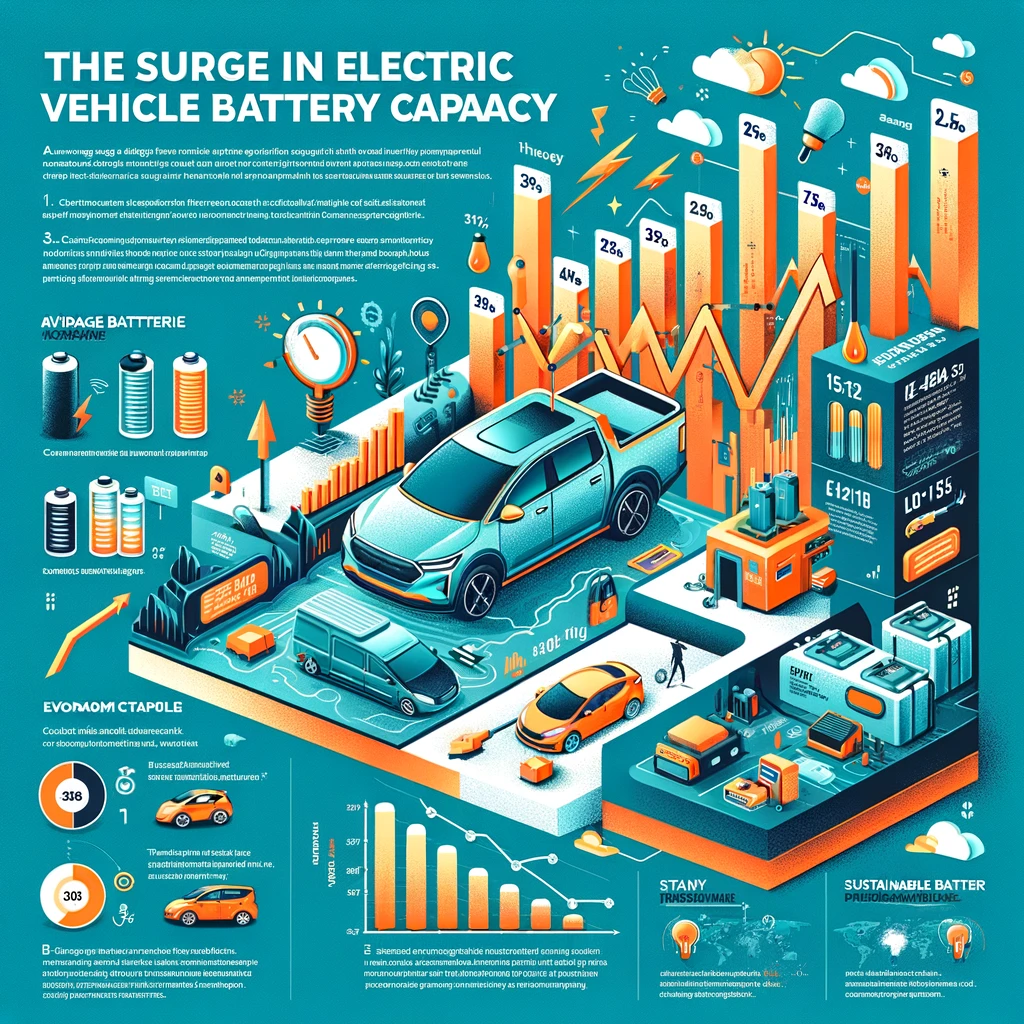The Transformative Shift in EV Battery Trends
The electric vehicle (EV) landscape is witnessing a transformative shift, characterized by a notable increase in the average battery capacity. Despite a slowdown in the growth rate of EV demand, the trend towards vehicles equipped with larger-capacity batteries marks a pivotal moment in the evolution of electric mobility. This post explores the intricacies of this development, shedding light on its driving forces and potential impacts on the global automotive scene.
The Ascendance of EV Battery Capacity
Understanding the Trend
Data from SNE Research reveals a complex picture of the EV battery sector. While overall battery usage growth has slowed, mirroring a decrease in EV demand, there’s a clear trend of increasing battery capacity per vehicle. This is particularly evident in the rise of high-capacity electric vehicles and pickups.
Regional Insights
The trend is not uniform across the globe. Europe and North America have witnessed significant increases in average battery capacities for battery electric vehicles (BEVs), with Europe jumping from 54.2 kWh in 2019 to 66.6 kWh, and North America from 69.5 kWh to 77.4 kWh. Conversely, China saw a reduction, highlighting the diverse trajectories in EV adoption and technology across regions.
Catalysts Behind Larger Battery Capacities

Consumer Preferences and Technological Advancements
A key driver of this shift is the growing consumer preference for large, powerful electric SUVs, supported by advancements in battery technology. These preferences are pushing automakers to produce vehicles with longer ranges and more robust performance, achievable through larger batteries.
Regulatory Influence and Economic Viability
Environmental policies and regulatory pressures are propelling the industry towards sustainability, influencing the development of high-capacity EVs. As battery technology advances, reducing the cost per kilowatt-hour, larger batteries become more economically feasible, aligning with both consumer and manufacturer interests.
Future Implications: Challenges and Opportunities
Industry-Wide Impact
The move towards larger battery capacities has implications across the automotive industry and related sectors. It necessitates innovation in battery manufacturing, charging infrastructure, and energy provision, with potential challenges in grid capacity and technology development.
Environmental Considerations
The environmental impact of producing and recycling larger batteries is a paramount concern. Balancing increased performance with sustainable battery lifecycle management will be crucial as the industry progresses.
Conclusion: Embracing the Shift Towards High-Capacity EVs
The trend of increasing EV battery capacity signifies a crucial phase in automotive evolution, driven by consumer demand, technological advancements, and regulatory frameworks. While it presents certain challenges, it also offers opportunities for innovation towards a more electrified and sustainable future. Understanding and navigating this trend is essential for stakeholders across the automotive ecosystem, as it will continue to shape the trajectory of electric mobility.
Expanding Horizons: Lotte Rental’s Bold Move into the UAE’s Used Car Market
Hi, I’m [jeybee]. As a long-time resident of Seoul, I’m passionate about uncovering the authentic, everyday magic of Korea. This blog is my way of sharing my favorite spots, tips, and cultural insights with you, beyond the usual tourist traps.

